Material Dye Manufacturing unit – Information to Working with a Dye Home – advantage + vice
A couple of weeks in the past, I shared a put up that takes you inside a cloth dye lab and teaches you all about how lab dips are made in a dye home. Now, this week, I’m going to inform you all about what goes on inside a cloth dye manufacturing unit after the lab dip approvals, and the order strikes to bulk.
Dye homes are one in all my favourite stops within the textile manufacturing provide chain for two causes! The primary, they’re a spectacle. Think about a complete warehouse of various machines larger than 16-wheelers. And, the second, dye homes are additionally a spot the place artwork meets science. It’s the place we create shade, however to make that shade, you want a deep understanding of chemistry.
Get able to study all about how materials get their shade in dye homes! This put up is for all my textile nerds on the market.
WHAT YOU WILL LEARN
PREPARING FABRICS FOR THE DYE PROCESS
PFD cloth prepared for dye
There are some things that must occur earlier than a cloth is able to get shade…
THE PFD PROCESS
Step one in a bulk cloth manufacturing order is eradicating all the colour. That is accomplished by means of the PFD, also called the “put together for dye” cloth course of. The PFD course of is a particular kind of wash that improves cloth dyeing. And, that is essential, as a result of when materials dye extra successfully, there are fewer model rejections, which means, much less waste. And, happier clients general.
WASH
Step one within the PFD course of includes the dye home eradicating the sizing from the material yarns. Industrial weaving and knitting machines are extraordinarily highly effective, and create materials quicker than the human eye can see. As a result of the yarns are shifting at such a quick price, they will turn into vulnerable to break. To stop this, sizing coats the yarn, to assist reinforce its energy. Sizing will be fabricated from pure substances like cornstarch, or synthetics equivalent to petroleum. However, whereas sizing retains a cloth robust, it additionally prevents shade from penetrating.
Consider it this manner: While you had been little, did you ever write a secret message on paper with a white crayon after which paint over it with watercolors to disclose the message? Sizing is rather like that; it repels the dye and retains the yarn white. So, the PFD course of makes use of a light-weight detergent to take away it.
WHITEN
The second step of the PFD course of includes the material dye manufacturing unit calmly bleaching the material. In its preliminary state, most, if not all, materials are barely yellow, which impacts the ultimate shade. For instance, in case you are making an attempt to dye a cloth a light-weight crimson shade and the material is yellowish, the colour goes to come back out wanting orange (since crimson and yellow mix to make orange). By beginning with a pure white base, we make the method of shade matching lots simpler.
As soon as the material goes by means of the PFD course of, it might probably transfer on to the massive dye machines.
HEAT TREATING STRETCH FABRICS
BTW – there may be yet another course of f a cloth has stretch fibers in it, like spandex, elastane, or lycra. It wants a particular course of of warmth remedy earlier than dyeing. Not each dye home will do that additional step, however the good ones who care about high quality will.
This particular warmth remedy will assist the stretch fibers preserve their stretch and restoration by means of your entire dye course of. That is actually essential from a high quality standpoint. If the stretch materials don’t get they warmth remedy, they have an inclination to stretch out shortly, making a garment that can disappoint clients.
WATCH THE VIDEO
Not within the temper to learn anymore? Watch the video (no judgment).
WHAT ALL DYE MACHINES HAVE IN COMMON

One of these dye machine is particularly for cotton materials
What do all dye machines have in widespread? They contain motion and warmth.
MOVEMENT
For cloth to dye effectively, it must be consistently shifting by means of the dye tub (water + dye). If the material and water sit, the dye (which is heavier than water) will begin to accumulate in the direction of the underside of the machine and create darker patches of shade on the material.
HEAT
The material must be sizzling to dye effectively. That’s as a result of the warmth will open up the fiber and permit the dye molecules to penetrate the fiber.
Do you know that crimson colours usually have the biggest molecules, so they’re the toughest to dye? That’s the reason new crimson clothes will generally flip your whole laundry pink. Mainly, all the molecules that didn’t totally penetrate the fiber, are washing off.
A technique to assist crimson fibers persist with the material higher is to make the material tremendous sizzling. The extra warmth, the extra the fiber opens up, and the extra the bigger crimson dye molecules get in.
3 DIFFERENT TYPES OF DYE MACHINES IN A DYE HOUSE
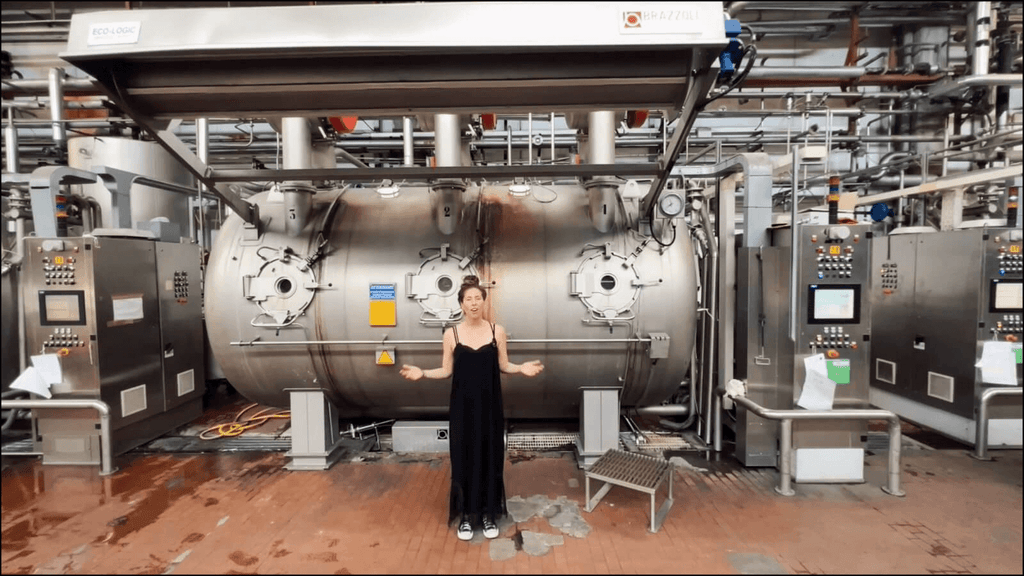
This dye machine is for all several types of materials, and will be sectioned off into 3 smaller vats to dye smaller MOQs
Now that what all dye machines have in widespread, let’s discuss what makes them completely different. There are three major kinds of industrial dye machines – Polyester, Cotton, and All-Objective. Every of them operates in another way and is made for several types of fibers. Let’s break them down.
POLYESTER MACHINES
Polyester dye machines are lengthy and snake-like. The tube, roughly 20 ft in size, is totally full of water and dye, and the material is snaked by means of the lengthy tubes for your entire course of.
COTTON MACHINES
Cotton dye machines appear to be large doughnuts. The manufacturing unit will fill the machines only one/2 with the dye tub. The material then loops round and across the circle, alternating between immersion within the dye tub and publicity to air. This goes on and on for generally an hour.
ALL-PURPOSE MACHINES
All-purpose machines are able to dyeing any kind of fiber. They appear to be large cylinders. Sometimes, one of these machine is the biggest and may dye probably the most cloth, accommodating as much as 600 kilos! What’s cool about these machines is that we will part them off. The complete machine can course of an enormous order, or it may be cut up into 3 separate compartments, every able to dealing with a extra manageable 200-kilo amount in three completely different colours. Whereas it won’t be the best dye system for the precise fiber, this machine is beneficial for smaller orders.
LOW MOQ FABRIC DYEING HACK
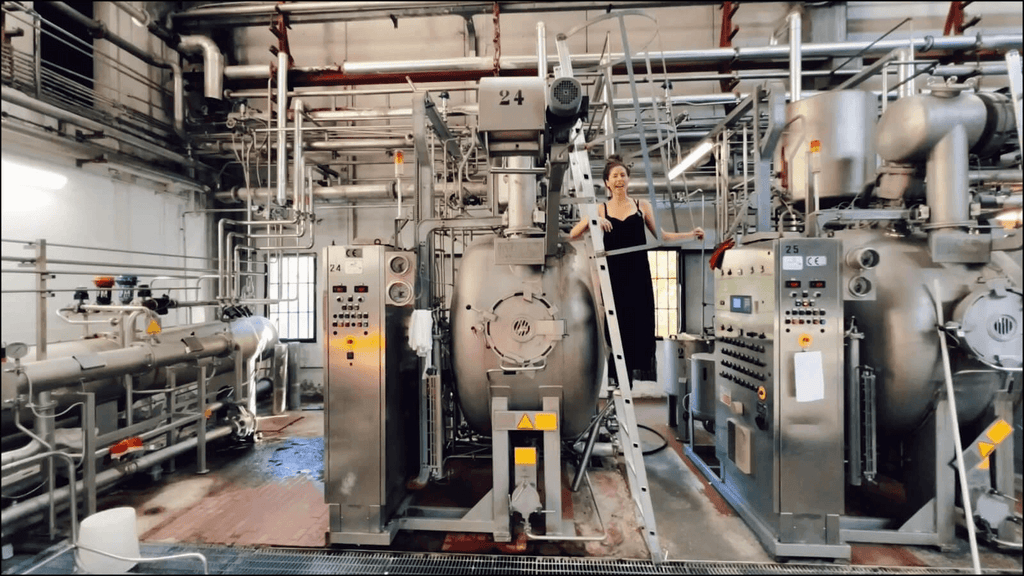
It is a pattern machine, however look how large it’s!
Hey, my vogue startup manufacturers? Do you want a very small quantity of material customized dyed? Do that hack…
SAMPLING MACHINES
Most cloth dye factories could have sampling machines, that are precisely just like the bigger machines however smaller. Completely different pattern machines can run anyplace from 10 to 100 meters, or 1-2 rolls of material.
Usually, sampling machines are used to create just a few rolls of material that can permit manufacturers to make their pre-production samples earlier than they place their manufacturing orders.
However, many dye homes will let small manufacturers place pattern orders as their manufacturing order. This manner, they will get began with their customized materials however don’t must decide to the massive minimal portions that the massive machines require.
The one draw back is that the value is considerably increased. So, if a manufacturing unit has a 1000-meter minimal, and also you, as a brand new model, solely want 100 meters, the value for the smaller order will likely be anyplace from 2-5 instances the actual manufacturing worth. That’s a giant improve! However, for my part, it’s nonetheless price it to have the ability to take a look at the design with a small order and get your foot within the door by constructing a relationship with an expert provide chain companion.
GARMENT DYE
There may be one final kind of machine known as a garment dye machine. One of these machine doesn’t dye materials, however as an alternative it’s used to dye clothes that had been already reduce and sewn.
One of many advantages of garment dying is that manufacturers are capable of place increased MOQ orders in PFD, after which dye the clothes completely different colours at a later date.
A draw back to garment dying is that clothes are inclined to shrink lots within the course of.
DRYING RANGE
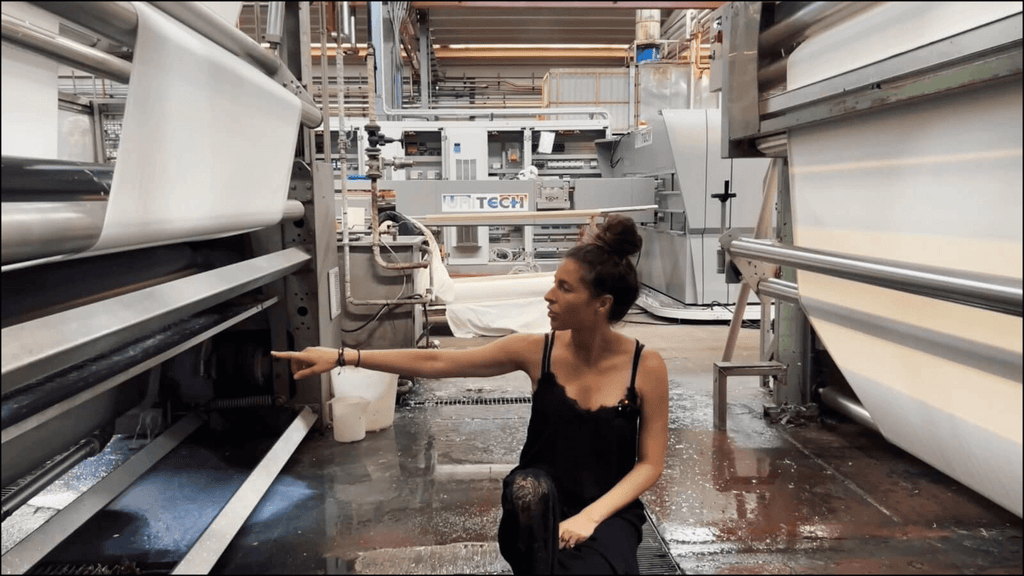
The material is handled with a softener answer earlier than it goes by means of the drying a part of the machine
After the materials are dyed, they should be dried, and, right here is how that occurs:
- Moist cloth is fed into the dry vary.
- Then, generally, the material will get a softening remedy or a remaining rinse.
- After, they clip the material onto a tenter body – a particular machine holds the width of the material in place, guaranteeing uniform drying.
- The material is “cured” or handed by means of a protracted oven for drying earlier than its remaining step (watch the video to see simply how lengthy it’s – it simply retains going.
-
As soon as the material is dries, one in all two issues happen:
- If the material is prepared for the shopper, they roll it up.
- If the material wants one other remedy, like printing, they fold it.
INSIDE THE COLOR KITCHEN

There may be dye inside all of those large inexperienced drums
These large machines take plenty of dye. And, the colour kitchen is the place it’s all saved.
In an older dye home, wheelbarrows full of blended colours are carted from the colour kitchen to the machines. However, in fashionable factories like this one in Italy, the colours are drawn up by means of what resembles an enormous vacuum cleaner hose after which conveyed by means of a collection of tubes on to the dyeing machine.
FINISHING TECHNIQUES
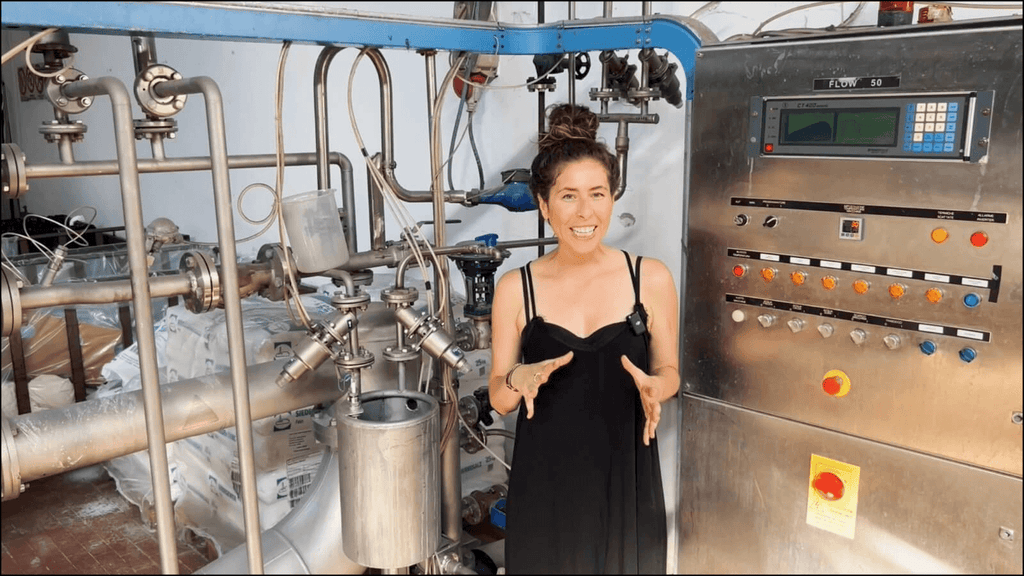
That is one other pattern machine, however for poly materials
It’s also widespread for a dye home do not simply do dying providers, they often additionally do different issues like cloth ending remedies. These will be both chemical or mechanical. An instance of a chemical end could be a water-proof chemical coating. And, an instance of a mechanical end is sand-washed denims, the place sand is used to put on down the material. Each are a straightforward approach so as to add textural selection and get completely different seems to be utilizing the identical cloth.
Personally, I feel each model ought to learn about these cloth ending hacks. Listed below are a few of my favorites:
MERCERIZATION
Mercerization is the method of immersing cotton materials in a sodium hydroxide answer. The pure form of a cotton fiber, when considered underneath a microscope after reducing a slice from it (the technical time period is cross-section), resembles a bean. However, what the sodium hydroxide answer does is trigger the fiber to swell and turn into spherical.
The method provides luster and energy to the material. Typically, the extra lustrous a fiber, the upper the standard (learn: luxury). And, who doesn’t desire a stronger cloth that can last more?
To summarize, mercerization is a triple win. The method is environmentally secure, and reasonably priced, and creates a textile that customers usually choose.
ENZYME-WASH
Enzyme washes are tremendous fascinating as a result of they will do every little thing, together with, in some instances, altering the colour of the material. Enzymes are environmentally pleasant, and, if you happen to ask me, are one of many keys to a extra sustainable future in cloth processing. I might want to create a weblog put up about enzymes sooner or later – as a result of I might discuss them for days. For now, you possibly can try this cool company, Novozymes, that focuses on them.
MICRO-FINISHES AND OTHER MECHANICAL FINISHES
Turning French terry material into the form of fleece you discover in hoodies, and creating that comfortable, fuzzy feeling on a flannel, are each mechanical ending processes. Basically, the material passes by means of a machine with massive wire bristles, considerably resembling a canine hairbrush. These brushes gently tough up the material, leading to a fuzzy end. On a smaller scale, we will additionally use this course of to create micro-finishes, which embrace materials like microsuede.
You’ll be able to watch this fast 10-second video to learn how French terry becomes fleece here.
QUALITY ASSURANCE
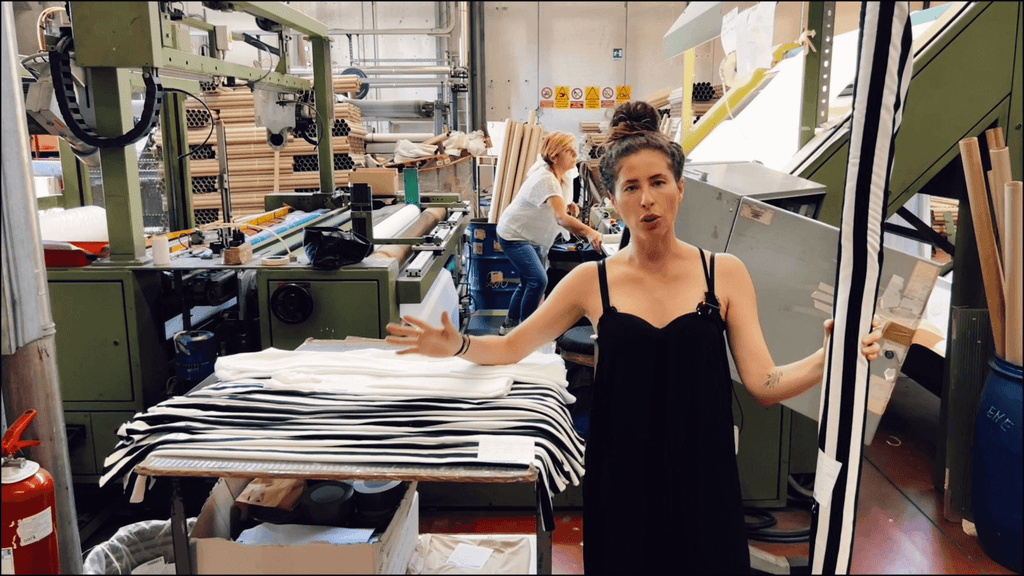
This cloth is being ready to be checked for shade variance and shrinkage
If me, you are conscious (and if we’re simply assembly – contemplate this) that my favourite room in any provide chain is the standard assurance room, as a result of that is the issue that may make or break a cloth dye manufacturing unit. The reality is, one thing is at all times bound to go wrong. Even with the most effective gear on this planet, manufacturing won’t ever be excellent. The nice factories are those that catch these errors and repair them earlier than the product will get to a buyer.
For high quality assurance, the dye home ought to take a 20cm pattern from every roll in an order to verify for 2 issues: shade and shrinkage.
COLOR
The very first thing a dye home will do is line up all the cuttings and create one thing known as a shade blanket. By putting all of the cuttings subsequent to one another, it’s simple to substantiate that all the colours from all the rolls match. The important thing time period to know right here is shade variance.
Now, rolls 1 and a pair of may look fairly comparable, but when every roll has even a teeny-tiny distinction, by the point you get to roll 20, it’d range drastically. And when you have a shirt that has a sleeve from roll 1 and a physique from roll 20, it’s going to appear to be the colours don’t match in any respect. If manufacturers know the shade variance, they will work with their manufacturing unit strategically to make use of rolls which can be probably the most much like each other, to make sure all parts of all clothes match.
SHRINKAGE
At this level, the material has been unrolled, stretched in all instructions, after which folded up. As a result of a lot has occurred to the material, the shrinkage might have been affected. And that may be a essential factor for the ultimate high quality of a shirt.
Have you ever ever had a shirt, and after you washed it, it match in another way? Possibly one aspect was pulling, or the armholes felt bizarre. It’s not prefer it went within the washer and have become too small; it simply felt form of off. Effectively, it is attainable that completely different elements of the shirt shrank at various charges. To ensure a high quality product that is still excellent after the shopper washes it, the dye home ought to at all times verify each roll for shrinkage.
ENVIRONMENTAL ISSUES TO CONSIDER AT A FABRIC DYE FACTORY
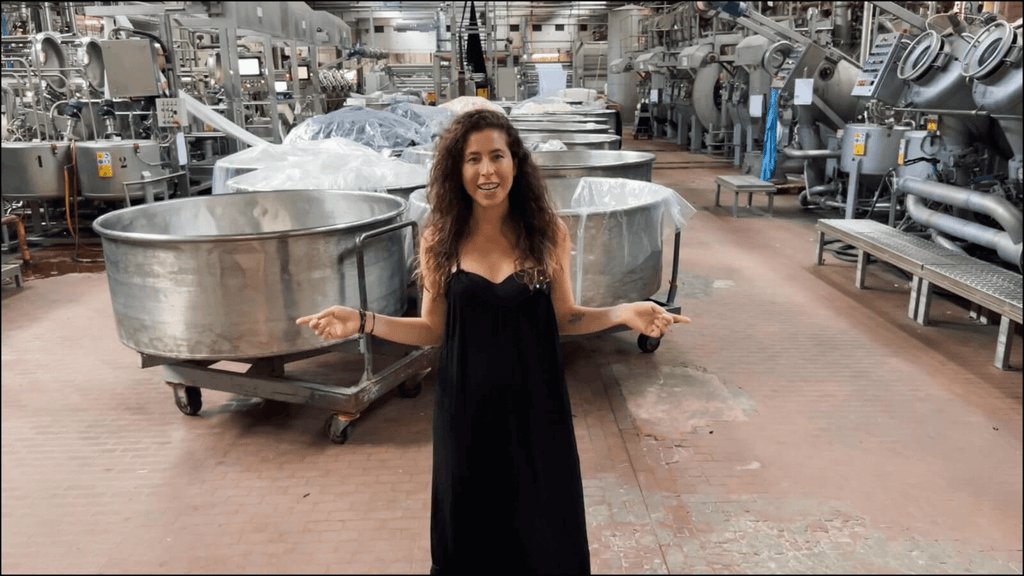
Plenty of assets go into maintaining dye homes this huge working
What did I say on the very begin of this text? Dyeing requires plenty of warmth and water. So, right here is how utilizing these components impacts the surroundings:
WATER USE
Right now, most factories use and reuse their water. As soon as the water is used for dyeing, it undergoes remedy to take away the dyes, making it appropriate for reuse. Now, I’m not saying that some dye homes don’t pollute and dump their soiled dye water into rivers and different locations. However, as a result of water is just not at all times plentiful in all areas, plenty of factories work arduous to preserve it.
ENERGY USE
An even bigger subject in a cloth dye manufacturing unit is the power to run the machines. Effectively, I suppose that is a matter for all the vogue business.
That can also be why many provider costs are growing. When the value of oil goes up, it instantly impacts the value of textiles, and due to that, clothes as effectively.
Many factories are starting the method of transitioning to greener power sources, equivalent to solar energy. However, the conversion prices are substantial, and the area required to gather sufficient power to function the machines exceeds what will be accommodated by only a rooftop.
TYPES OF DYE
Typically artificial dyes and chemcial dyes are used with the enormous machines. Natual dye materials are made in smaller batches, utilizing smaller machines.
60 SECOND RECAP
ADDITIONAL RESOURCES
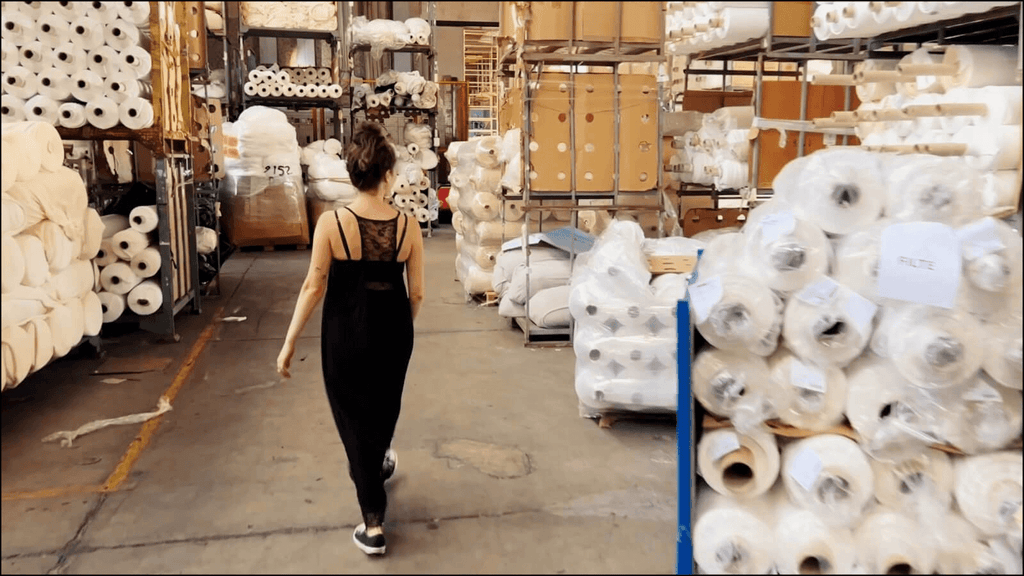
WHAT DO YOU THINK?
Let me know within the feedback your favourite takeaway from this text and even your least favourite. The suggestions I obtain helps me create extra content material tailor-made to your style, so please contribute your ideas!
latest video
latest pick
news via inbox
Nulla turp dis cursus. Integer liberos euismod pretium faucibua




















